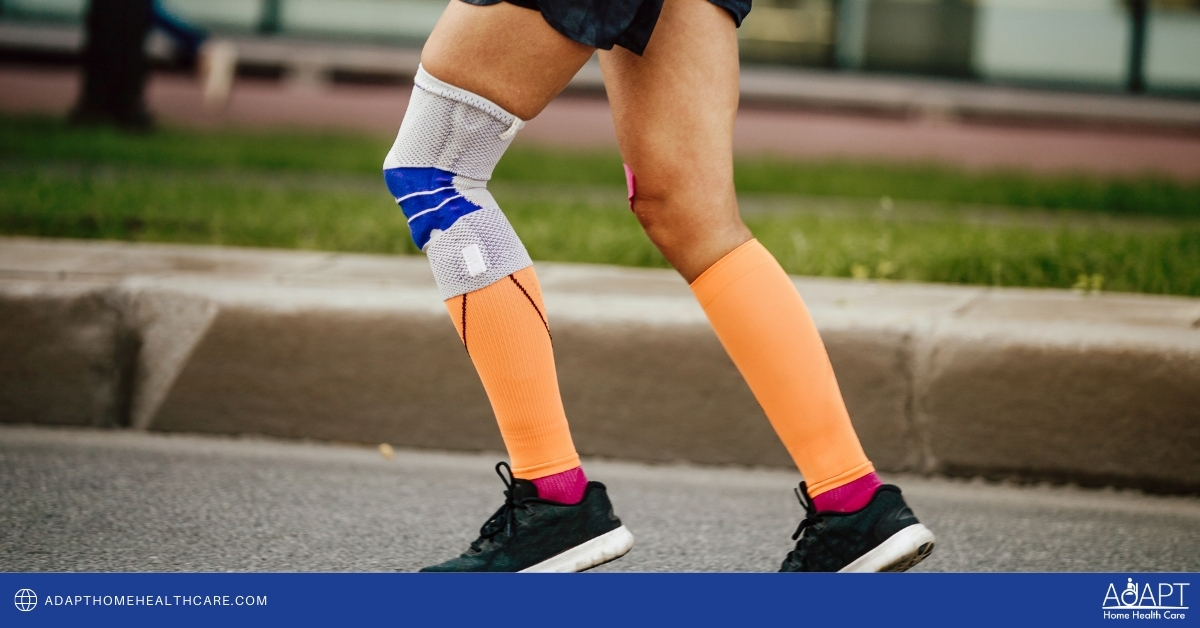

Try to pull the compression sock all the way up, so that the compression is well dispersed across your feet and legs.

If you have trouble sliding the compression sock on, try using a small amount of talcum powder on your feet or legs. If you wear compression stockings, you should put on your compression socks or stockings just like any other socks – starting with pulling it over your foot and unrolling up your leg. Tips for wearing compression socks Putting compression socks on For people on their feet all day at work, compression socks can help reduce fatigue, pain or swelling by increasing blood and oxygen flow in the legs and feet.Airplane passengers or crew on long or frequent air flights may want to wear compression socks to help increase circulation and reduce their risk of developing deep vein thrombosis or blood clots.Most pregnant women see the best results with compression socks when they put them on in the morning as a preventative measure, versus putting them on after they’ve developed swelling. Pregnant women who are prone to swelling in their legs, feet or ankles may want to wear compression stockings to reduce chances of swelling.For someone who is confined to a wheelchair, compression socks can help improve blood flow and reduce swelling in the legs.Some athletes also wear compression wraps to help speed up their post-workout recovery. Athletes sometimes wear compression socks on their arms or hands to help improve blood flow and oxygen delivery while they’re working out, practicing or during competition.Reducing pain related to varicose veinsĬompression socks can be useful for other situations, too:.Preventing deep vein thrombosis in the legs.Preventing blood from pooling in the leg veins.Managing orthostatic hypotension, or low blood pressure when you stand up after a period of sitting down.Decreasing swelling in the legs and ankles.Your doctor may recommend you wear compression socks for: Who could benefit from wearing compression socks?Ĭompression socks can be beneficial for many conditions. Support hosiery offers the same level of compression throughout the stocking and can provide relief for tired, achy legs. Nonmedical support hosiery: This type of compression stocking does not require a prescription and is available at most pharmacies.
#Surprising benefits of compression socks professional#
Anti-embolism stockings also generally require a doctor’s prescription and professional fitting. “Anti-embolism stockings can help reduce the chances of developing deep vein thrombosis,” says Dr.


 0 kommentar(er)
0 kommentar(er)
